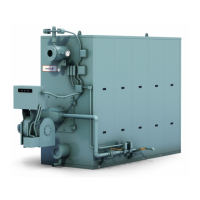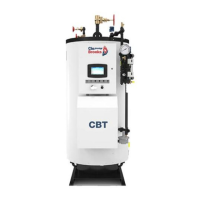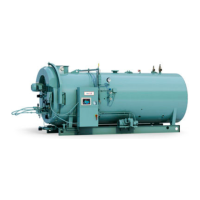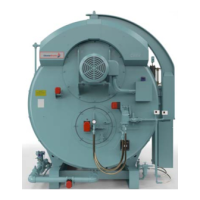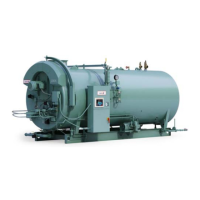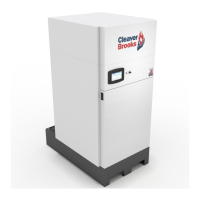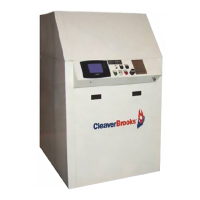Profire V Burner Chapter 2
750-177 2-21
TO PREVENT POSSIBLE SERIOUS INJURY OR DEATH, READ THE FLAME SAFEGUARD MANUAL AND
FULLY UNDERSTAND ITS CONTENT BEFORE ATTEMPTING TO OPERATE THIS EQUIPMENT.
SHOULD A STARTING FAILURE OCCUR FOR ANY REASON, COMBUSTIBLE FUMES MAY FILL THE
COMBUSTION CHAMBER. NEVER ATTEMPT TO RE-LIGHT THE BURNER UNDER THESE CONDITIONS
WITHOUT PURGING THE CHAMBER.
ELECTRICAL INTERFERENCE TEST
Prior to putting the burner into service, conduct the following test to ascertain that ignition spark will not cause
the flame relay to pull in.
Gas Fired
Close the pilot and main line manual gas valves. Start the burner and at time of pilot trial with just the
electrical ignition system energized. The flame relay should not pull in (should not be energized).
Upon completion of successful test, proceed with startup procedures.
Oil Fired
Disconnect the electrical power to the burner. Disconnect the electric oil safety shutoff valve. Reconnect
electric power. Close the pilot line manual gas valve, if used.
Start burner and at the time of pilot trial, with just the electrical ignition system energized. The flame relay
should not pull in.
Upon completion of successful test, disconnect power supply. Reconnect oil safety shutoff valve and turn on
manual pilot gas valve. Reconnect power supply and proceed with startup procedures.
BURNER IGNITION ADJUSTMENT
Gas Pilot Flame Adjustment
The gas pilot flame is regulated by adjusting the pressure setting of the pilot regulator. Normal setting is 4” to
6” W.C. when the pilot is burning. The flame must be sufficient to be proven by the flame detector and ignite
the main flame.
Although it is possible to visibly adjust the size of the pilot flame, obtain a proper DC volt or microamp reading
of the flame signal. The flame safeguard amplifier has a meter jack for this purpose. At initial startup and
during planned maintenance, test the pilot flame signal, pilot turndown and safety switch lockout.
Gas Pilot Turndown Test
For burners equipped with a gas pilot, conduct the following test:
1. Turn the burner switch “ON”. This will start the blower motor and initiate the pre-purge sequence. Makesure a pres-
sure gauge 0” to 10” W.C. or a manometer is installed in the pilot line to monitor the pilot gaspressure.
2. When the pilot comes on, put the programmer timer on pilot hold by placing the “RUN-TEST” switch onthe flame
safeguard to the “TEST” position.
3. Check the flame signal strength. Adjust the flame signal by increasing or decreasing pilot gas pressurewith the reg-
